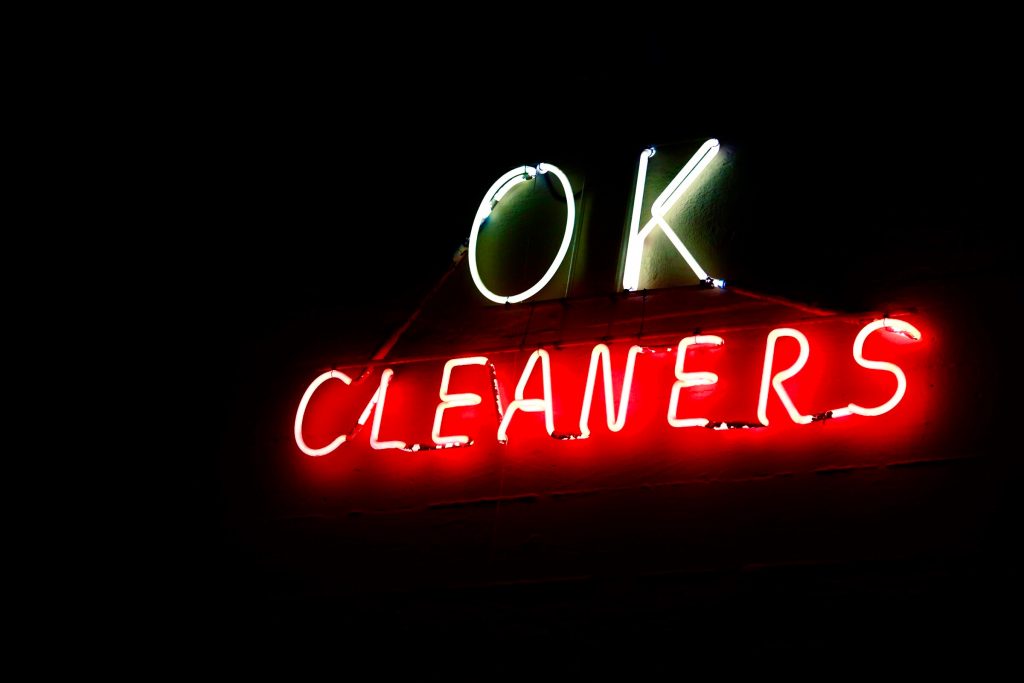How do you make a million dollars in the dry-cleaning business? Start with two.
Old joke. Funny, and not funny at the same time. Our is a rapidly changing industry. Pieces are hard to find. Staffing is difficult. And then there are all the rest of the challenges, which you know better than me.
In the fabric care industry, there are multiple elements of success. We must first have access to enough clients with enough money to afford our services. Nothing is more important. You simply cannot get something from nothing, no matter how well you market yourself. This is the one thing that no amount of self-improvement can alter if it’s missing.
How To Prioritize Your Strengths To Get The Most Out Of Your Market Share on XWe then need good locations, probably in upscale, professional neighborhoods to serve people who wear clothes that require professional care. That is a demographic site assessment problem. We should have storefronts that appeal to this segment of our buying public. That is an interior design problem. Or we need delivery services that are convenient, easy to access and timely. Systems that ensure our clients’ clothes are ready to wear and ready on time are essential. We must have the knowledge to employ those systems and the technical expertise to successfully clean and press the clothes, our primary responsibility. These are the technical aspects of our professional craft for us to master.
Don’t forget that at the end of the day, companies like Zoots failed because they could not clean the clothes, their primary mission, and yours too. So many people overlook that fundamental truth. Their marketing and branding were exemplary. So were their locations. I don’t know about their overall cost structure for sure, but I do know that they could not successfully navigate the process of getting dirty clothes in the door and clean garments out in the time they promised the client to accomplish the task. I was at the original Zoots central production facility for their bankruptcy auction. I visited their operations office. On the wall, there was a sign that said, “If a client calls with a blood stain, tell them to soak it in hot water, and bring it to us.” No kidding, Sherlock. Hot water. There go 100 million dollars, down the drain.
It’s vital when troubleshooting any problem to understand what system is involved. Here is a simple example. In a hot water home heating system there are three essential components. The burner makes the heat. The pump circulates the hot water. The zone valves allow the hot water to pass through. If you call for heat in your living room, (“Yo, heat!”) but none arrives, what system is failing? If the burner is burning and the circulator is pumping, check the zone valve and the thermostat, for there is the problem.
When analyzing your own operations with a view to improvement, it’s vital to determine which components have strength and which elements are failing, and then to address them in the correct order. This concept is often misunderstood or overlooked. But this is where true problem solving begins.
How do you make a million dollars in the dry-cleaning business? Start with two. Share on XMost of us have some of the elements of success in our businesses, and to varying degrees, but not all. We can blend our locations, to our best service, along with a solid brand with which our clients identify and respect. We should offer our service at a price our clients are willing to pay, obviously the higher, the better. And we must ultimately perform the task our clients pay us to do at least on time, if not efficiently.
Some businesses are simply fortunate in their circumstances. They serve a large, prosperous clientele whose lifestyle requires them to wear clothes that need professional care. There is a dry-cleaning company I have visited west of the Mississippi located near a major metropolitan area with a professional population that commutes into the city adjacent to their location. And the commuter train station is just around the corner. The community that hosts this business has a sky-high median income. That is a treasure trove of the first essential element, potential clients. This vast universe of potential clients work in offices, so their clothes typically just need “freshening up” most of the time. The most complicated stain they usually see is coffee. The company has been in existence for at least two generations, and they bought their location before real estate prices had skyrocketed to stratospheric levels. They don’t have multiple locations, and they do not offer pick-up and delivery. Their production staff is plentiful, and when someone leaves, they find their own replacement from a pool of family and friends from the neighborhood. Due to the convenience of their location and the wealth of their clients, they charge a high price for the service they offer. The customer is always right, and a harsh word hasn’t been spoken between a client and the staff since 1967, a great thing. The call office of this business is immaculate, but the production area is messy and chaotic. Lawrence of Arabia could not survive the dust and dirt around their dry cleaning machine, and the newest press in service was built when Nixon was President. But their point of sale system is the highest caliber. Their average ticket sale is more than $50, and their annual volume is near 3.5 million dollars. Their profit margin typically ranges around 20%. Welcome to paradise.
Now I may have made some of that UP. I may have blended some things, and it may or may not have been out west. Let’s just say, some of us have locations where it would be difficult to fail, and some of us have locations where it is difficult to succeed, regardless of how you act.
How do owners with indifferent technical practices, who are unfeeling to their staff, who do not possess the professional wherewithal to withstand a complete inspection, front to back, inside and out, thrive?
This is how. The owners who succeed despite glaring weaknesses have capitalized in their own unique ways on their fortunate circumstances. They have found a formula that they employ rigorously and relentlessly to meet the needs of their unique clientele. It may be a combination of location, wealth, marketing, brilliant presentation to the customer’s eye and a brand that perfectly syncs with their client base. Put that same company with the same owners in less than ideal demographic circumstances, and instead of box seat season tickets at the new billion-dollar sports stadium and a new luxury car every other year, they would be struggling to survive.
The dry cleaners who succeed despite glaring weaknesses have capitalized in their own unique ways on their fortunate circumstances. Read more here > Share on XBut please don’t misunderstand me. These owners are smart, extremely tough-minded, understand the keys to their success, are hard-working and knowledgeable. I’ll explain how in a second.
Most of us have some of the elements for success mentioned above, but not all. When only some of the ingredients for success are present, we must scramble to piece together a winning formula. As one element in the perfect recipe goes down, other things must rise to take their place.
The owners in high success areas almost always get the branding right. It’s Apple retail all the way. It’s a beautiful presentation. It’s a high price. It’s on time. And they have cameras everywhere. Their information technology is top shelf, and so is their understanding of their database and point of sale system. These are their primary strengths. These successful owners know exactly what they are selling, and it’s not necessarily clean clothes. Sometimes they sell convenience combined with luxury. Sometimes they sell status. Sometimes they sell pretty. Sometimes they charge much more just because their clients actually feel better paying more. It gives them the sense of being valued and important. They almost always excel in financial information, control, and planning. Some get the backstory right as well, but many do not. They may struggle with their pieces per operator hour. They don’t need it. They may drag their employees through the mud, or not relate to them at all. They may not even know how to clean the clothes beyond throwing them in a machine that gets very little attention and then pressing them. The conditions in the back often don’t match the conditions in the call office. In fact, the conditions in production might be just plain bad.
The owners in middle success demographic areas are hardly ever great at their branding. They tend to not know what they are selling. If they are successful, they must blend elements together that compose a successful package. They are often efficient and highly organized. Their production people are well trained and coached. They probably lead the production effort themselves for at least part of the day. They often turn on the boiler in the morning. They need routes, medical laundry, uniform rental, fire restoration or something to kick them over the top. They have multiple locations to reach what clients they have. They tend to do everything reasonably well and one or two things great, but they are a little confused, and burnt out, mostly because they are too close to the action.
If you look at yourself, and things aren’t as great as you would like, what elements are missing? If you don’t have a large enough client base with money, no one can help you. After that, it’s essential that you have financial control of your business. (I shouldn’t have to say that, should I?) Bring your database management up to the highest level of which you are capable. If you have access to enough clients, work next on your brand. Know what you are selling. (At my company, we sell customer service, before and after we clean the clothes. Our stores are cathedrals to customer service, where every need is foreseen and joyfully met, and failure is overcome by whatever it takes to make it right.)
Communicate your brand in every potential customer contact consistently, and with joy and enthusiasm. Get your staff all on the same mission and all highly motivated. Improve your standards day by day. Make sure you take time to think and to plan. Keep educating yourself. Belong to at least one cost bureau group. Participate in peer review and follow the suggestions of your peers. (The Mercedes / Lexus guys always do this.) Buy the best detergent and the work with the best technicians in the industry by buying Kreussler products.
Here’s the point, finally. The more challenging your market, the more professional you must be. Success is a thousand ships all arriving at the same destination at the same time. There is no silver bullet. No “secret of success.” You must do everything right. But the problems you face must be clearly understood, and success demands that they are addressed in the correct order. And if you are not sure what to do, find a way to educate yourself, before it’s too late.



